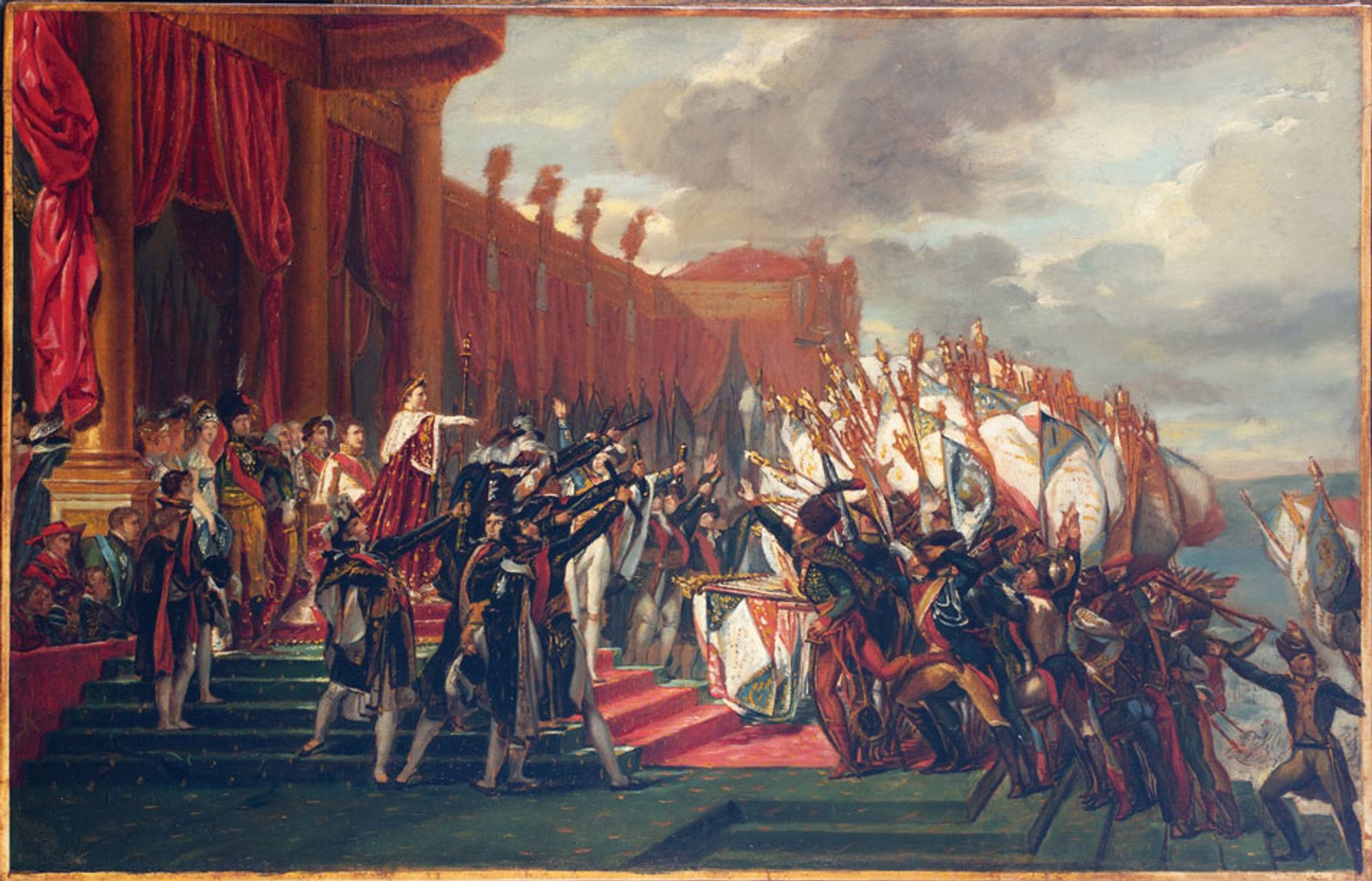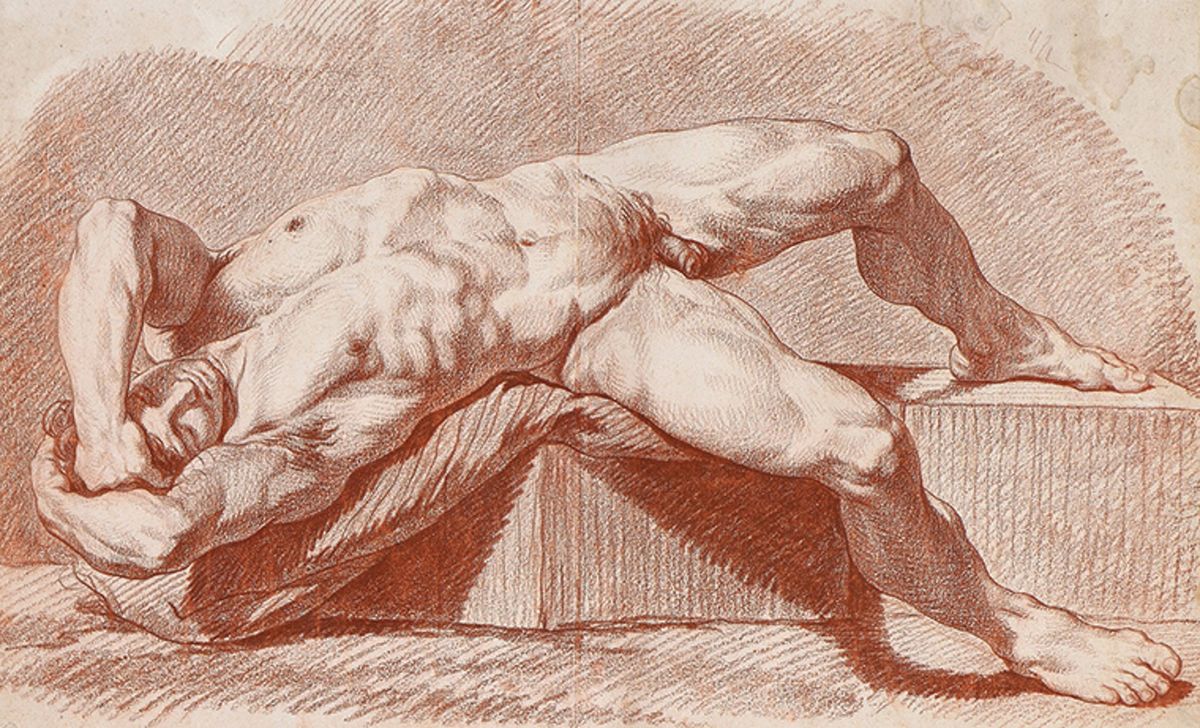For nearly three decades, from the twilight years of King Louis XVI to the defeat of Napoleon at Waterloo, the French painter Jacques-Louis David was the great image-maker of his time, turning the tenets of Neo-Classicism into an evolving house style for both the French Revolution and France’s first empire.
Trained at Paris’s Royal Academy, David (1748-1825) relied on drawings to create his monumental paintings, and now New York’s Metropolitan Museum of Art will go behind the scenes of masterpieces such Oath of the Horatii (around 1784), which created a template for nearly a century of history painting, and The Coronation of Napoleon (around 1805-07), the 10m-wide depiction of the diminutive emperor crowning himself.

David's The Distribution of the Eagles (around 1809-10) Xike Jiulu, Shanghai; Photo credit: ArtDiscovery, 2018
The exhibition will present 84 works, stretching from David’s student days to his years of Belgian exile following the restoration of France’s Bourbon dynasty. Largely made up of preparatory sketches for oil paintings—including the Met’s The of Death of Socrates (1787), also on display—the show revisits the 20-year-old catalogue raisonné of David’s drawings with “a bunch of new discoveries”, says the curator Perrin Stein. One of the highlights is a mid-1770s red-chalk drawing of a reclining male nude that was given as a gift by David to a French architect, and which stayed in the family for centuries, only coming to light a few years ago, Stein says.
Arguably the most important drawing to resurface since the 2002 catalogue is an oil sketch related to David’s The Distribution of the Eagle Standards (1810), the artist’s last great commission from Napoleon, showing the emperor invoking the military traditions of ancient Rome. The previously unknown sketch, on loan from the Chinese collector who bought it at auction in 2019 for just over $2.5m, has “a lot of impasto and brilliant colours”, Stein says. The work proves that David continued to use preparatory oil sketches “decades longer than we thought”.
• Jacques-Louis David: Radical Draftsman, Metropolitan Museum of Art, New York, 17 February-15 May


